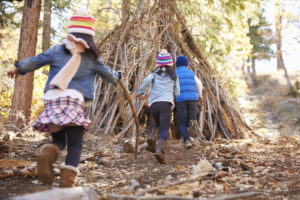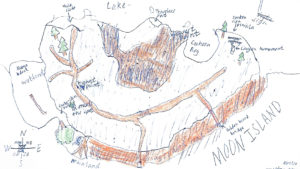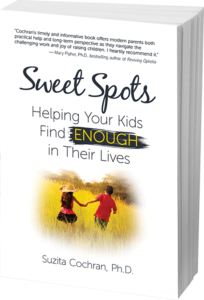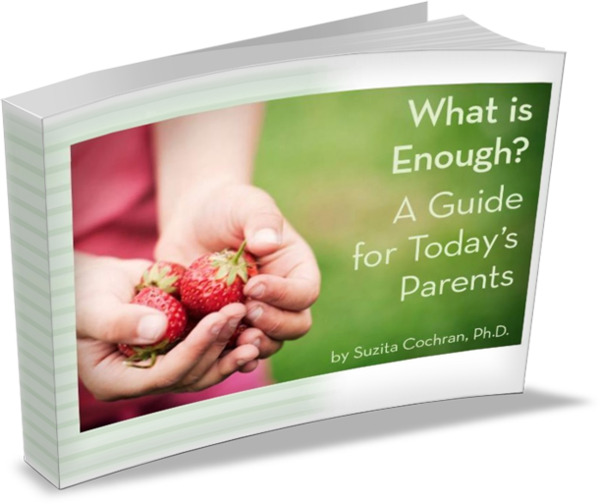I remember the day the I hit the wall. It was in the middle of a long summer of what we referred to as “Mom camp,” and at the peak of our two-playgrounds-a-day phase—one in the morning, another in the afternoon. And I just couldn’t do it anymore.
That summer the kids were 10, 8, and 5, and Todd, who was working hard to finish his first book before his teaching semester began, needed quiet time to write.
I’m not sure how inspiration struck—it was likely due to the desperation I felt. But out of the blue, I recalled a small slice of land on the edge of a pond, on the far side of a park, on the other end of town. I piled the kids in the car with some notebooks, pencils, bags for collecting, and snacks—and drove off.
We walked for half a mile to get to the spot. The children were somewhat cranky when we arrived, but it was fairly secluded so no one heard their fussing.
A Deserted Island
I informed the kids I was dropping them off on a deserted island. It was about 100 yards across with a big hill in the middle, and the pond on one side. On the other side was a creek-sized body of water separating it from the “mainland.” The first job was to create a bridge.
I sat on a bench on the mainland while they built and explored. It was one of those wonderful parenting experiences that worked—which is probably why I remember it. As Angela Hanscom says in Balanced and Barefoot, the first thing that happens when kids lose themselves in nature is quiet. The loud, whiny voices come to an almost instant halt. A sense of focus takes hold.
Once the kids made their way onto the island via their soggy bridge of sticks and logs, five-year-old Annie picked her way to the water’s edge and began searching for rocks and water bugs. Stephen, age ten, started surveying the landmass and later drew a map of it in his notebook—which I thought might happen as he was deep into his map-making phase. Eight-year-old Daniel got right down to building some sort of structure with plants and sticks, while keeping an eye out for natural treasures—he was in a pirate/detective phase.
When it was time to leave, the kids told me they’d christened the place “Moon Island” because it was somewhat crescent-shaped. Stephen pulled out his map, Daniel showed me various treasures he’d found, and Annie chattered about the bug species she’d discovered. All three begged me to return to their island soon.
Vitamin N
I love Richard Louv’s term ”Vitamin N” to describe children’s biological need for nature in their lives. Angela Hanscom, a pediatric occupational therapist, reminds us that children involved in active free play outdoors are stimulating each of their senses and igniting their imaginations—their neurons firing on all cylinders. This type of play increases kids’ creativity, helps them regulate their emotions, and enhances their social development.
Play in the natural world reduces children’s anxiety, allows them to slow down and focus, and is less stimulating than much of the indoor world with its bright colors and loud sounds.
Nature Supports Sensory Integration
Hanscom says that the heavy lifting children naturally do outdoors—picking up boulders or tree branches—supports their proprioception, giving them a sense of body position and motion. This type of play helps kids discover and regulate how much force they need for completing varied tasks in life. She mentions that spinning and rolling, also common in outdoor play, stimulate the vestibular sense, telling children where their bodies are in space.
Free play in nature activates each sense, not simply proprioception and vestibular. It then helps kids weave the feedback from their senses into an integrated whole that clearly communicates signals from the outside world. Hanscom describes sensory integration as taking all the puzzle pieces and pulling them together into a bigger picture. She suggests imagining a child climbing a tree barefoot, experiencing the sensation through her eyes, feet, hands, nose, and even muscles and joints. Think of the information this child is taking in from all her senses.
What About in Winter?
Wintertime can be challenging when it comes to spending time in nature with children. When my kids were young, I had many “misses” on cold-day outdoor experiences, but a few did hit the mark, such as:
- Walking along an iced-over creek, and letting the kids play beside it. They broke the ice by throwing big rocks and pounding it with sticks, and saw how far small rocks slid on the icy surface. As long as Mama stayed warm, this play could go on for hours.
- Building snow forts in the backyard after big storms. We found kid-sized snow shovels for small, mittened hands, and let them loose.
- Walking the neighborhood finding icy spots between the sidewalk and street. The kids then broke, crunched, and jumped on the ice while declaring themselves “The Icebreakers.”
- Building winter dams. When it was a bit sunny and the snow began to melt into little streams along the sidewalks, the kids built small dams and other architectural creations in the flowing water.
Final Thoughts
Being in nature calms a fussy toddler and soothes a disgruntled teen. And don’t forget that it makes the parents of these children feel more sane and grounded too. When we immerse ourselves in nature, even if just in bits at a time, we are reminded there are many things bigger than we are. Our problems aren’t so large when seen from this perspective.



 Sweet Spots: Helping Your Kids Find ENOUGH in Their Lives.
Sweet Spots: Helping Your Kids Find ENOUGH in Their Lives.


Ahh yes, the beauty and endless remedies of nature!
Beautiful blog !!! I remember when … and both kids still find peace in the outdoors.
In the summertime in southern California, it can actually be hard to find a sheltered place for this sort of important play. We have found ourselves visiting botanical gardens a lot, since some offer shade and water, allowing the kids to explore without overheating. This post reminds me that, once this year’s winter rains end, we need to head outdoors again!